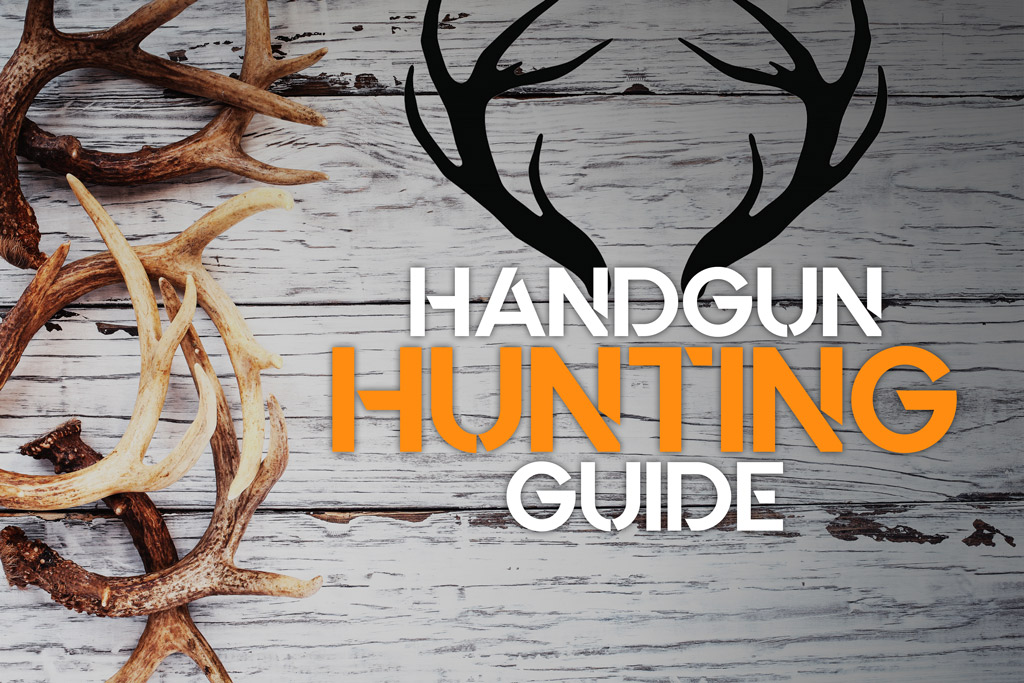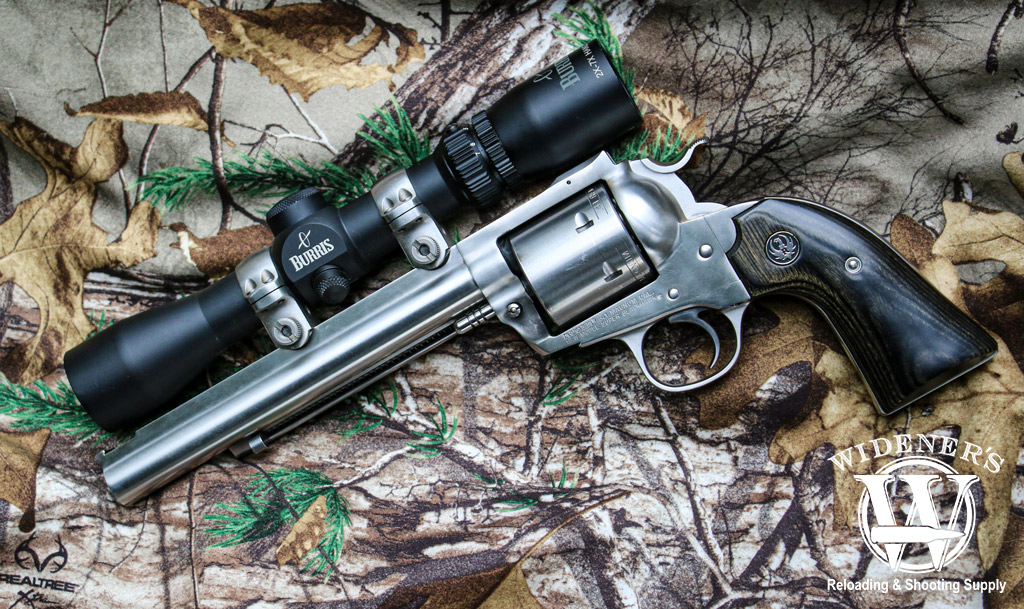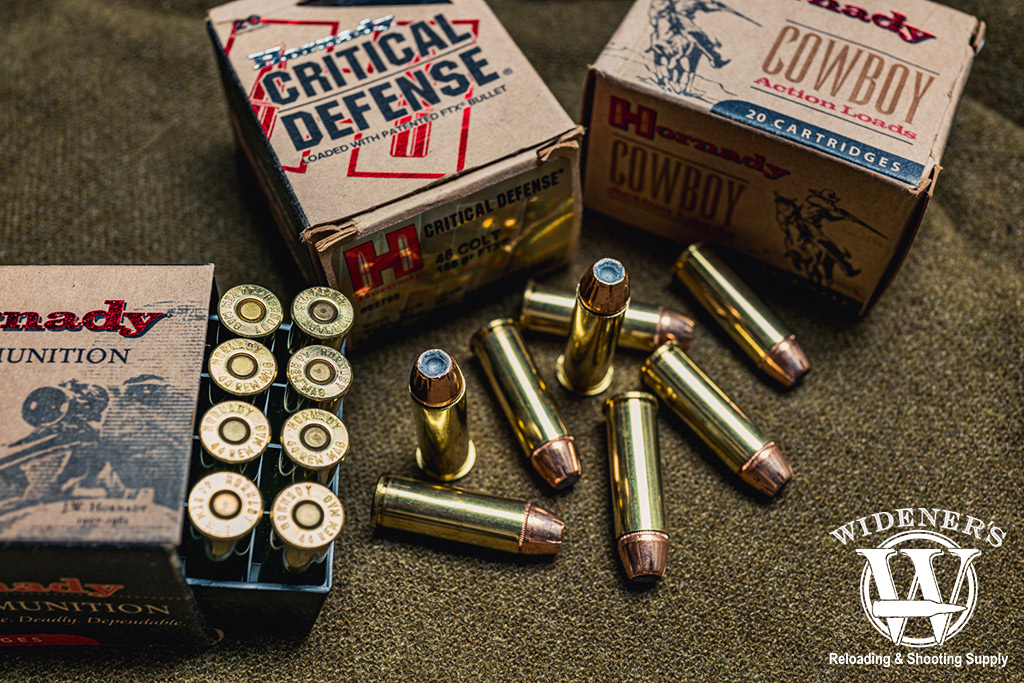

By Guy J. Sagi
Consistent success when hunting with a handgun takes an unusual orchestration of skill, knowledge, and patience. However, decades of expertise are not a prerequisite for handgun hunting. Thousands of first-timers fill big-game tags annually with their shorter-than-traditional guns and, for many, the attraction is more than just the added challenge.
Handgun Hunting Benefits
Early Hunt Access
Handgun season also opens early in many regions of the country, often weeks before rifle- or shotgun-carrying sportsmen take to the field. That means fewer crowds, reduced pressure, and game less likely to have already adopted painfully reclusive habits.
Longer Season
It’s also not unusual for this alternative method season—as many fish and game departments term it—to last longer, even extend into and run concurrently with those for long arms. The benefit’s a big one if unavoidable business trips, anniversaries, or family gatherings chronically conflict with hunting dates.
Increased Lottery Hunt Chances
Another consideration, particularly in the West, is a byproduct of the lottery-type systems used to issue tags for many premier management units. Traditionally the bulk of applicants are rifle hunters, so if there’s a special handgun season for that area, applying for one of those permits can increase the odds of getting drawn.
Regulatory Perks
Some regions offer other benefits. Several counties in North Carolina, for example, require deer hunters using rifles to shoot from stands at least 10 feet above ground. The same regulation does not always apply for handgun hunters. The option is an attractive one for those not fond of heights or uncomfortable with single-seat confinement for hours.
Ease Of Transport
A handgun is also easier to haul than a rifle or shotgun. It’s much easier to fly with as well if you’re traveling across the country. Before heading afield with your favorite sidearm, though, a little research is in order.
Know The Rules
Consult your state hunting regulations to determine if handgun hunting is legal. There are a few states that do not allow the use of semi-automatic pistols, for example. Others dictate minimum caliber, barrel length and even muzzle energy.
In Illinois, for example, centerfire revolvers legal for hunting must be .30-caliber or larger with at least 3-inches of barrel. Just across the Mississippi, Iowa requires a minimum of .357 Mag. chambering in wheel guns, but 4-inch barrels. It, like its midwestern neighbor, also expressly prohibits cartridges with FMJ bullets. Game managers often modify the rules in response to changes in herd density and improvement in firearm and cartridge performance, so review regulations annually.
Handgun Hunting Options

The Ruger Blackhawk revolver comes in a variety of calibers and remains a popular handgun hunting option.
Revolvers aren’t the only option in most regions, including Iowa and Illinois. There are four different handgun designs common for hunting, and rifle or shotgun hunters just converting will feel comfortable behind two of them.
Revolvers
Revolvers with beefy cylinders capable of handling powerful cartridges are historically the most popular when it comes to hunting. That began in 1935, with the introduction of the .357 Mag. and the Smith & Wesson Model 27 to chamber it. When Maj. Dan Wesson—grandson of the company’s co-founder—used one to take antelope, bear, elk and moose, avid hunters took note.
The wheel gun’s big-big game potential increased dramatically 20 years later, with the introduction of the .44 Mag. and the Smith & Wesson Model 29 revolver to chamber it. Then came the .454 Casull, permanently silencing even the most vocal skeptics.
A variety of revolvers ideal for the pursuit are available today. The list of cartridges now includes the .460 S&W that appeared in 2005 and 2003’s formidable .500 S&W. Both can, and do, take American bison in controlled hunts every year and carry enough energy at moderate distance for the humane take of moose, elk, deer and more.
Semi-Auto
Semi-automatic handguns are legal for the pursuit of big game in many regions, but consult regulations. Some energy is lost in cycling the pistols, and the typically shorter barrels do not squeeze the last bit of performance out of any cartridge. For those reasons game managers either require they meet or exceed certain specifications or preclude them from use.
It is, however, pleasing how many states acknowledge the performance by allowing the use of semi-auto pistols for hunting. That doesn’t necessarily mean only big-bore, long slides are legal for opening day. Self-defense models take wild pigs during Arizona’s handgun, archery and muzzleloader season annually. From feral hogs to deer, the number afield increases every season.
Single-Shot
Thompson/Center introduced its break-action, single-shot Contender pistol in 1967 and it wasn’t long before it attracted a loyal following. The rugged handgun is capable of handling potent rifle cartridges and changes chamberings with DIY dexterity with a simple barrel swap. It continues to be a popular choice to this day.
Single shots are familiar ground to most shooters, including rifle owners converting to a handgun for fall. There is no shortage of models available. Go with one in the same chambering as a favorite big-game rifle and ammunition supply streamlines.
This style also lends itself to scope mounting. Eye relief is a limiting factor, though, so it’s best to avoid the combination of a heavy-recoiling cartridge with specialized long-distance optics.
Bolt Action
In 1963 Remington introduced its XP-100. The handgun’s Remington 700 action and .221 Fireball chambering were radical at the time. It wasn’t long until the handgun was produced in models for cartridges more ideally suited for big-game hunting. The design lent itself to rifle scopes.
The steady sales made it obvious sportsmen were eager for a magazine-fed, big-game-capable handgun capable of punching tiny groups at mind-boggling distances. Remington’s out of business, but companies offer similar versions in one-shot-stoppers that include .308 Win., 6.5 Creedmoor, and others. Mounted on a tripod, or sandbagged, the precision of this platform rivals many rifles. Were it not for the missing shoulder mount and cheek weld, operation is identical, too.
Cartridge Choice & Distance

Choosing the right ammo for handgun hunting can be just as important as selecting your firearm.
Regulations in Iowa and Illinois make it obvious most, if not all, states do not allow the use of cartridges with FMJ bullets. That lack of expansion upon impact minimizes energy transfer and increases risk of wounding—perhaps never recovering—the animal.
Rifle loads manufactured with hunting in mind deliver terminal performance ideal for the pursuit. Companies make you aware of the load’s specialty in the packaging, but look for expanding bullet designs. Soft points are the most common, but identical or better performance comes from more modern versions with polymer tips and others.
The requirements are similar when selecting ammunition for a handgun chambered for a pistol cartridge. Controlled expansion is key, so look for jacketed hollow points or similar options often marketed as ideal for self-defense.
Effective Range
There is a reduction in effective range when handgun hunting, even when behind a scoped and enviably precise bolt action running a rifle load. The most obvious reason is loss of stability due to lighter weight and less contact surface to anchor the gun.
The less obvious limit, even for expert marksmen, is enforced by the fact that distance affects bullet performance by more than just wind drift and drop. For that projectile to expand properly on impact it needs to reach the target at a velocity inside its performance window. Too fast and it could shatter into pieces, but if it arrives too slow it may not expand at all. The former are not a concern for handgun hunters running rifle cartridges. The latter is.
Some of a rifle cartridge’s powder charge will not burn before the bullet exits a handgun’s shorter barrel. That results in a slight reduction in velocity at the muzzle and proportionate loss in effective range. Even if that single-shot or bolt-action handgun delivers tiny groups at long distances, it may not be an effective one-shot stopper there.
Handgun Hunting Accessories

There’s a wide variety of optics and accessories available on the market for handgun hunters.
A variety of accessories for handgun hunting are available today, and optics are the most popular. Red dots are an ideal addition to revolvers and semi-autos. They’re also great on bolt actions and single shots, although those eagerly accept modest- to medium-magnification rifle scopes. Keep eye relief in mind when selecting, though. Done right the setup is a familiar one for veteran rifle hunters.
Shooting sticks help steady that short barrel for longer shots. Belt-carried and readily deployed bipod-style versions are also available, and a great choice for spot-and-stalk hunts.
Tripods are no longer the exclusive realm of photographers and videographers. Today many hunters mount their handguns on them using the various adapters or special padded grips/cradles available. The setup partially addresses the eye relief concern with scopes while providing rock-steady performance. And don’t forget to bring spare magazines or speed loaders.
Think Small
If small game is your passion, odds are good handguns are legal for their pursuit in your region. Consult your state’s regulations for full details, but if you’re eager to dust off that rimfire revolver, fall is a great time to do so. There’s also no shortage of .223 Rem. single shot and bolt-action handguns out there designed for pursuing predators.
Hundreds of diehard rifle and shotgun enthusiasts take up handgun hunting every year. Their initial reasons may be different, as well as the style gun they choose, but once afield the experience is the same—added challenge that makes filling that tag even more exhilarating.


